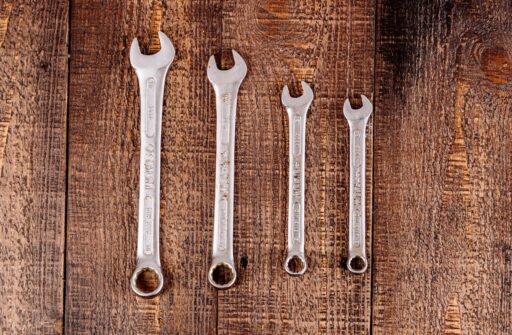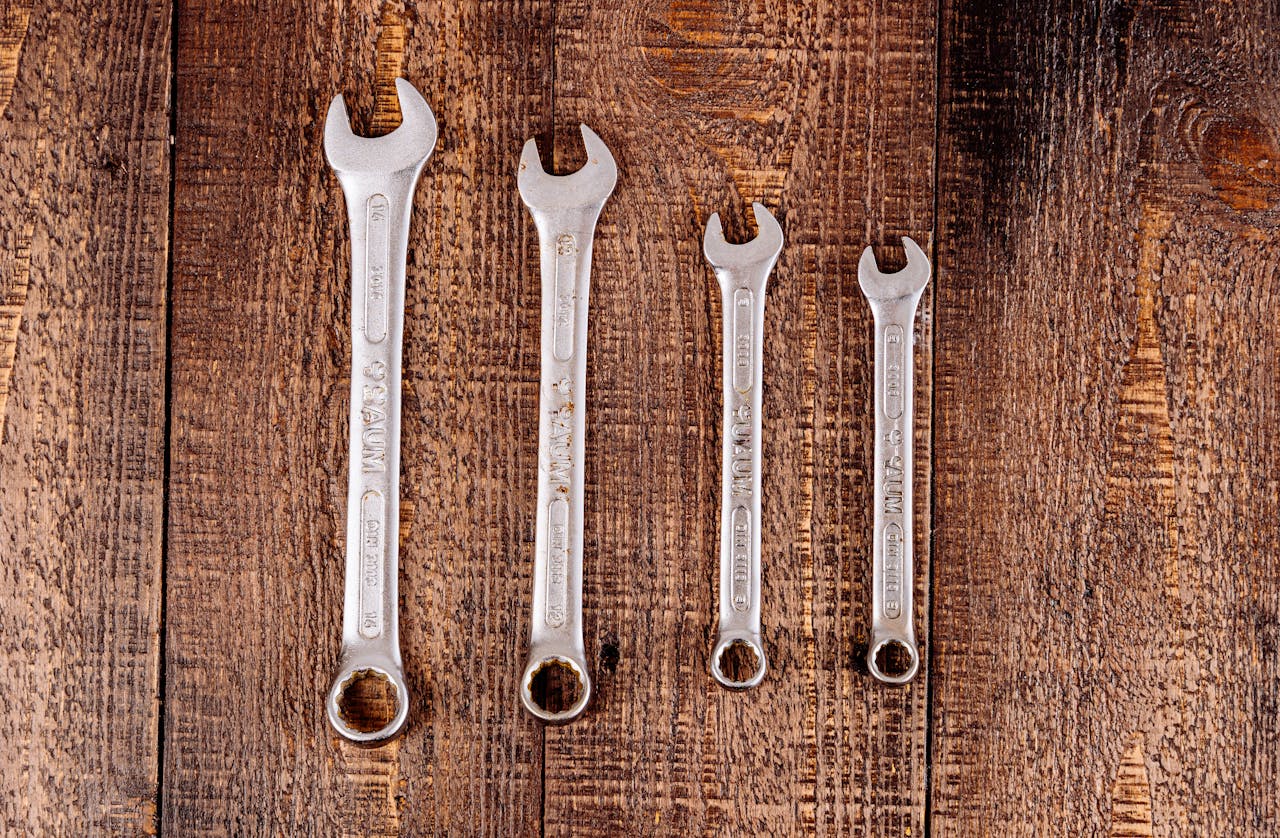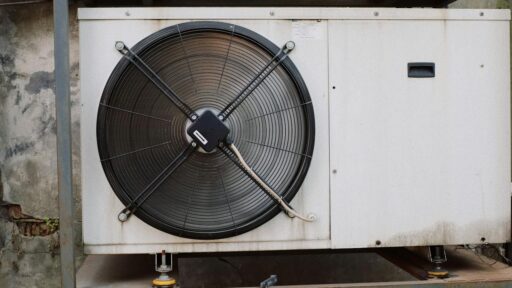Plumbing problems can turn serious fast. A small leak can flood a room in minutes. Knowing what to do right away protects your home and your budget. If you face a burst pipe, a sewage backup, or a water heater leak, act now and call emergency plumbing services. Quick steps at home plus fast help from pros can stop damage and keep your family safe.
This guide explains how to spot a true emergency, what to do first, and when to bring in emergency plumbing services. You will learn simple steps you can take in minutes, how to use shutoff valves, and how to work with a team that responds day or night.
Recognize a True Plumbing Emergency
Some issues can wait. Others cannot. Use the signs below to decide if you need help right now.
| Situation | Risks | First action |
|---|---|---|
| Burst pipe or active spraying leak | Flooding, ceiling collapse, and mold | Shut off the water at the main. Open a faucet to relieve pressure |
| Sewage is backing up in the tub or floor drain | Health hazard, property damage | Stop all water use. Call for a main line check |
| The toilet overflow that will not stop | Contamination, floor damage | Turn off the toilet valve. Mop up and sanitize |
| Water heater leaking or hissing | Scalding, water damage | Turn off the cold inlet. Turn off the power or gas supply |
| Hidden leak with bulging ceiling | Collapse risk, electrical hazard | Kill the water at the main. Place buckets. Stay clear of sagging areas |
| No water in the whole house, with hissing in the walls | Supply failure, break in the service line | Shut the main. Call a pro to locate the break |
| Strong sewer odor indoors | Leak, dry trap, or cracked vent | Run water in traps. If odor stays, schedule a smoke test |
If you are in Tigard, keep a note in your phone that says plumbing Tigard with your top local contacts. In a crisis, you will not want to search. One tap saves time when every minute counts.
How to Tell an Emergency from a Nuisance
- One slow sink is a nuisance. Multiple slow drains at once are an emergency.
- A drip into a bucket is a nuisance. A steady spray is an emergency.
- A toilet that clogs but does not overflow is a nuisance. A toilet that fills and spills is an emergency.
- A minor water heater sweat is a nuisance. A steady leak or hissing is an emergency.
First Steps Before Help Arrives
You can limit damage with four simple moves. Keep calm. Work in this order.
1) Stop the Water
- For a fixture leak, close the small valve under the sink, behind the toilet, or above the washer.
- For big leaks or backups, close the main shutoff.
- After closing, open a cold faucet on the lowest floor to release pressure.
2) Make the Area Safe
- Keep children and pets away from wet areas.
- Do not step in water near outlets or cords. Turn on the power to the area if needed.
- For gas water heaters, turn the gas control to Off if the heater or its pan is flooding.
3) Protect Your Home
- Move rugs, papers, and electronics out of wet zones.
- Set towels, plastic, or a baking sheet under slow drips.
- Place a bucket under ceiling drips. Poke a small hole in the bulge only if the ceiling is sagging and unsafe.
4) Call for Help
- Describe the issue clearly. Say where the water is coming from and how fast.
- Share what you already shut off.
- Ask for guidance you can do safely while you wait.
When to Call Emergency Plumbing Services
Call right away if you see any of these:
- Active leak that does not stop with a fixture valve
- Sewage backing up in a tub, shower, or floor drain
- No water in the home is tied to a suspected break.
- Water heater leak or strange sounds from the tank
- Frozen pipe that split or is now leaking
- Ceiling or wall swelling with water inside.
Emergency plumbing services are built for fast response. They stop the water, stabilize the site, and make safe temporary repairs. Permanent repairs may follow after parts arrive or permits are pulled.
What to Tell the Dispatcher
- Your address and the closest cross street
- The problem type and location in the home
- What water valves or breakers have you already turned off
- Any health or access needs, like elderly residents or locked gates
- The best phone number for updates
What to Expect on Arrival
- A quick assessment and moisture check
- Shutoff confirmation and system isolation
- Temporary fixes to stop leaks
- Camera checks for sewer issues when safe to do so
- A clear plan for next steps and options
Find and Use Shutoff Valves Fast
Knowing your shutoffs saves time. Share this simple cheat sheet with your family.
| Fixture or system | Where to find the shutoff | How to close it |
|---|---|---|
| Whole house main | At the meter box, curb box, garage wall, or crawl space | Turn the handle clockwise. For a meter valve, use a meter key |
| Sink faucet | Under the sink, two small valves | Turn each valve clockwise until snug |
| Toilet | On the wall behind or below the tank | Turn the small valve clockwise |
| Washing machine | Valves on the wall behind the unit | Turn both hot and cold valves clockwise |
| Water heater cold inlet | Valve above the tank on the cold pipe | Turn clockwise to stop water from entering the heater |
| Outdoor hose bib | Valve inside the wall or a shutoff near the bib | Turn clockwise before winter or for leaks |
If a valve is stuck, do not force it. Use the main shutoff and wait for a pro.
Fast Triage by Problem Type
Use these short guides to act with confidence.
Burst or Split Pipe
- Close the main.
- Open a low faucet to drain lines.
- Place towels and buckets.
- Call for emergency help. A tech will cap or replace the bad section.
Toilet Overflow
- Lift the tank lid and pull up the flapper to stop the flow if the bowl is rising.
- Turn off the toilet valve.
- Mop and disinfect the floor.
- Do not flush again until a pro clears the blockage.
Sewage Backup
- Stop all water use in the home.
- Do not run sinks or showers.
- Keep people and pets away from affected areas.
- Call for emergency sewer service. A camera check will confirm the cause.
Water Heater Leak
- Turn off the cold inlet to the tank.
- Turn off the power at the breaker for electricity. Turn gas control to Off for gas units.
- If the pan is full, place towels and a wet-dry vacuum if you have one.
- Call for service. The valve, tank, or connections may need repair or replacement.
Frozen Pipe
- If not leaking, warm the area with a hair dryer on low or warm towels. Do not use open flames.
- If leaking, close the main and call for repairs.
- After repairs, ask about insulation and heat tape for exposed lines.
Hidden Leaks in Walls or Ceilings
- Close the main if water is active.
- Catch drips with buckets. Protect floors.
- Call a pro for leak detection. Minimize opening walls until the source is known.
Simple Tools and Supplies to Keep Ready
- Meter key or adjustable wrench for the curb stop
- Flashlight with extra batteries
- Towels, a mop, and a wet-dry vacuum
- Leak detection pads or a few absorbent mats
- Plastic sheeting or trash bags to protect furniture
- Duct tape and a small roll of pipe thread tape for minor fittings
- Zip ties to secure a loose drain hose in a pinch
- Nitrile gloves and basic disinfectant for small cleanups
Store these in one grab-and-go bin. Label it so everyone can find it fast.
DIY Actions You Can Safely Take
- Close shutoff valves and the main.
- Clear hair from a shower drain with a plastic hook tool.
- Plunge a single clogged toilet or sink. Use a cup plunger for sinks and a flange plunger for toilets.
- Tighten a dripping faucet handle gently if it is loose.
- Clean up standing water to protect floors.
Avoid these high-risk moves:
- Do not use chemical drain cleaners. They can make later work unsafe and damage pipes.
- Do not remove a toilet to snake the line without the right tools.
- Do not open sealed water heater parts.
- Do not cut into walls or ceilings until the leak is located.
How Pros Solve Emergencies
Different problems need different fixes. Here are common solutions.
| Problem | Pro solution | Notes |
|---|---|---|
| Main line clog | Machine auger or hydro jet, then camera | Finds roots, grease, or a break |
| Split supply line | Cut out and replace with a new pipe or a proper coupling | Temporary caps may be used to restore partial service |
| Toilet failure | Replace the fill valve, flapper, or wax ring | Fast parts swap gets you back online |
| Water heater leak | Replace the failed valve or the tank | Old tanks often need full replacement |
| Slab leak | Reroute line overhead or through walls | Reduces the risk of more slab breaks |
| Hidden wall leak | Targeted opening, repair, and dry-out plan | Moisture check prevents mold growth |
Costs and What Affects Them
Emergency costs depend on time of day, access, and parts. You can control some factors.
- Clear access to the area to save time.
- Know where your shutoffs are to prevent extra damage.
- Share photos and videos with the dispatcher so the tech brings the right parts.
- Approve only the scope needed to stop the emergency now. Schedule larger upgrades later if you prefer.
Insurance may help with sudden water damage from burst pipes. Sewer backups often need a special rider. Call your agent to understand your coverage. Keep photos, videos, and invoices.
Prevent the Next Emergency
A few habits reduce risk and stress.
- Do not flush wipes or hygiene products. Even if labeled flushable, they can clog lines.
- Wipe grease into the trash, not the sink.
- Install mesh strainers on kitchen and shower drains.
- Test shutoff valves twice a year so they do not seize.
- Keep water pressure within code. Around 60 psi is a good target. Ask about a pressure-reducing valve if needed.
- Insulate pipes in garages, crawl spaces, and exterior walls.
- Service your water heater per the manufacturer’s guide. Replace aging tanks before they fail.
- Trim roots near sewer lines and schedule camera checks if you have large trees.
Real-World Examples
Case 1: Burst laundry hose
A homeowner heard a loud pop and saw water spraying in the laundry room. They closed the main, opened a faucet to relieve pressure, and called for help. The tech replaced the washer hoses with braided stainless lines and added new shutoff valves. The fast shutoff kept damage to a small area of flooring.
Case 2: Midnight sewer backup
A family noticed water pooling in a basement shower. They stopped all water use and called for emergency help. A camera found roots at the main line. Jetting cleared the roots, and a plan was set to line the pipe the next week. No drywall needed removal, and the home was back in service that night.
Case 3: Water heater tank leak
An older tank started dripping from the bottom. The owner turned off the cold inlet and power. A new high-efficiency tank was installed the same day. The tech added a drain pan and a proper discharge line to reduce future risk.
How to Choose the Right Emergency Plumber
Pick a team with a clear process and solid communication.
- Licensed, bonded, and insured
- True 24/7 live answering and dispatch
- Camera inspections available for drain issues
- Written estimate and clear scope before work
- Respectful crews who protect floors and clean up
- Workmanship and parts warranty in writing
Ask for a brief after-action report. It should list the cause, the fix, and any long-term recommendations.
Why Choose Plumbing and Sewer Renewal Specialists
Plumbing and Sewer Renewal Specialists respond fast and fix the root cause. The team handles urgent leaks, backups, and failed fixtures day and night. They offer clear choices, from temporary stabilization to permanent repair. You get straight talk, careful site protection, and follow-up that prevents repeat problems. When you need trusted help now, they deliver prompt, professional emergency plumbing services with results you can see.
Planning Ahead: Your Family Emergency Plumbing Plan
- Walk the home and locate every shutoff.
- Tag valves with easy labels like Kitchen Sink Hot, Kitchen Sink Cold, and Main Shutoff.
- Save photos of shutoffs on your phone.
- Post the main shutoff location on the inside of a utility cabinet door.
- Keep the emergency bin in a known spot and tell the family where it is.
- Save your top plumber’s number as a favorite.
FAQs About Emergency Plumbing Services
What counts as a plumbing emergency?
- Any active leak, sewage backup, or failure that risks safety or property. If water is spreading or sewage is present, call now.
Can I wait until morning to call?
- If the water is off and the leak has stopped, you may wait. If water or sewage is still moving, call right away.
Will the plumber fix it fully on the first visit?
- The tech will stop the emergency and make it safe. Some permanent repairs need parts, permits, or a return visit.
How long will it take for help to arrive?
- Response times vary by time and location. Share clear details and access info to speed things up.
Should I turn off my water heater if the main is off?
- Yes. Turn off the power to electric heaters and set gas controls to Off until water service is restored.
Do I need a camera inspection after a backup?
- Yes. It finds the cause and helps prevent the next event.
Working With Local Pros
Local knowledge saves time. Teams that work in your area know common pipe materials, soil, and code details. If you ever need quick help at odd hours, a simple search for plumbing Tigard can bring up nearby teams that understand local conditions and can respond fast.
Final Thoughts
Act fast, stay safe, and call for help when water or sewage will not stop. Close shutoffs, protect your home, and use emergency plumbing services to stabilize the problem. Learn your valves, keep a small kit ready, and build a short contact list. With a simple plan and the right team, you can turn a crisis into a quick, clean fix and keep life moving.








